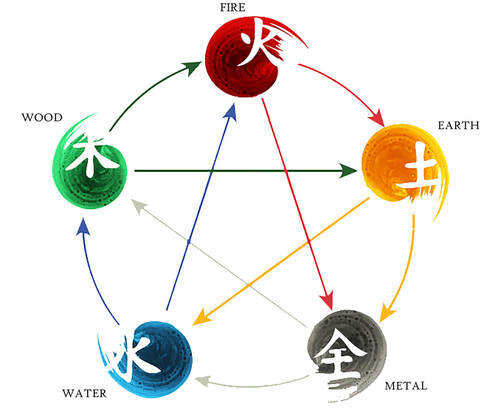Close your eyes for a moment and imagine this: You’re standing on a forest trail, surrounded by the gentle rustling of leaves. The solid earth beneath your feet gives you a sense of grounding. The breeze brushes past your skin, while the warmth of sunlight energizes your body. A nearby stream flows softly, and above it all, there’s the vastness of open sky. Each of these elements—earth, water, fire, air, and space—are more than parts of nature. They are reflections of the five elements in yoga, a system that underpins our physical, mental, and spiritual health.
What Are the Five Elements in Yoga?
The philosophy of yoga tells us that the entire universe, including our bodies and minds, is made up of five essential elements:
- Earth (Prithvi): Represents stability, structure, and grounding.
- Water (Jal): Symbolizes flow, adaptability, and emotions.
- Fire (Agni): Denotes transformation, energy, and passion.
- Air (Vayu): Stands for movement, freedom, and breath.
- Space (Akasha): The vastness that holds everything together, representing connection and awareness.
Each element plays a critical role in shaping our experience of life, influencing our health, emotions, and mental clarity. When these elements are balanced, we thrive. When they’re out of sync, we feel disconnected—from ourselves and the world around us. The practice of yoga helps us bring these elements into harmony.
Earth: Finding Grounding and Stability
The five elements in yoga forms the foundation of our existence where the earth element is the core for this. It relates to the physical body—our bones, muscles, and skin—and governs feelings of stability and security. If you’ve ever felt ungrounded, perhaps during a stressful time, it’s a sign your earth element needs attention.
How to Balance the Earth Element in Yoga
Yoga poses like Mountain Pose (Tadasana), Tree Pose (Vrikshasana), and Warrior II (Virabhadrasana II) help connect you with the earth. These grounding poses bring you back to your center, reminding you of your strength and resilience.
Imagine the roots of a tree—firmly anchored yet flexible enough to sway with the wind. When you work with the earth element amongst these five elements in yoga, you cultivate a similar steadiness. A personal example? I once used grounding poses to manage anxiety before a big presentation. With every deep breath, I visualized roots growing from my feet, anchoring me to the ground. It worked wonders!
Water: Embracing Flow and Emotion
Think of water—its gentle ripples, flowing rivers, or the crashing waves of the ocean. Water embodies adaptability, creativity, and emotional depth. When your water element is balanced from the five elements in yoga, you feel in tune with your emotions. When it’s out of sync, emotions might overwhelm you.
How to Balance the Water Element in Yoga
Flow-based practices, like vinyasa yoga, tap into the water element. Fluid movements between poses mimic the flow of water and create emotional release. Forward bends, like Seated Forward Fold (Paschimottanasana), also help soothe emotional turbulence.
Fire: Igniting Transformation and Passion
Fire represents energy, passion, and transformation. It’s the inner spark that fuels your ambitions and helps you overcome obstacles. But too much fire can lead to burnout, while too little leaves you feeling unmotivated.
How to Balance the Fire Element in Yoga
Poses like Sun Salutations (Surya Namaskar), Boat Pose (Navasana), and Twists (Ardha Matsyendrasana) stoke the inner fire. These practices ignite your energy while promoting detoxification. Fire element practices are especially helpful in the morning to kickstart your day.
The fire-element yoga is a game-changer during a period of low energy. Practicing Sun Salutations daily helps regain focus and enthusiasm for tasks you have been avoiding. Each movement will feel like a spark rekindling inner drive.
Air: Cultivating Freedom and Movement
Air is the breath of life. It governs the flow of energy through the body, as well as mental clarity and lightness. When the air element is balanced, you feel open and free. Imbalance, however, can lead to restlessness or mental fog.
How to Balance the Air Element in Yoga
Breathing practices (pranayama) are the key to harmonizing the air element from these five elements in yoga. Techniques like Alternate Nostril Breathing (Nadi Shodhana) or Kapalabhati (Skull-Shining Breath) create a sense of calm and clarity. In terms of poses, heart-opening asanas like Camel Pose (Ustrasana) allow the breath to flow freely.
There’s a particular joy in practicing pranayama outdoors. On one breezy morning, I sat under a tree and practiced Nadi Shodhana. With every breath, I felt the wind around me mirror the rhythm of my inhale and exhale. That sense of connection—to the air within and outside—was unforgettable.
Space: Connecting to the Infinite
The space element, or akasha, is the most subtle of the five. It’s the container that holds all the other elements together. In the body, it relates to awareness, intuition, and spiritual connection.
How to Balance the Space Element in Yoga
Meditation and mindfulness practices help align the space element amongst these five elements in yoga. By sitting in silence or practicing poses like Savasana (Corpse Pose), you can cultivate a sense of spaciousness within.
One evening, after a hectic day, I turned to meditation. Closing my eyes, I imagined the vastness of the night sky. With each breath, I felt a little less confined by the day’s worries. It was a reminder that, like space, I am expansive and capable of holding it all.
Bringing It All Together: Harmony Through the Five Elements in Yoga
Balancing the five elements in yoga is like tuning a symphony. Each element has its own unique rhythm and role, but together, they create harmony. The practices you choose can vary depending on your needs. Feeling ungrounded? Focus on earth. Overwhelmed by emotions? Embrace water.
The beauty of five elements in yoga is its adaptability. It meets you where you are, whether you need grounding, transformation, or spiritual connection. The five elements in yoga offer a roadmap to understanding yourself—and the world around you—on a deeper level.
So next time you step onto your mat, take a moment to ask: Which element needs my attention today? Your practice might just bring you back into balance, one breath at a time.

